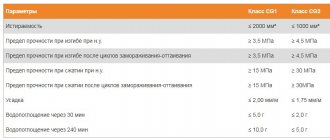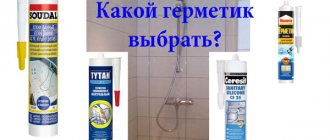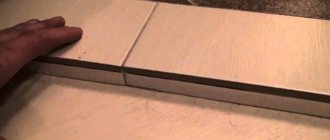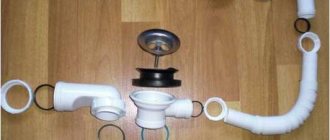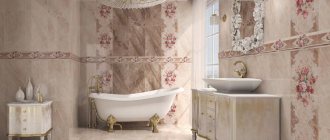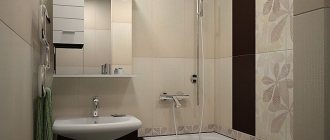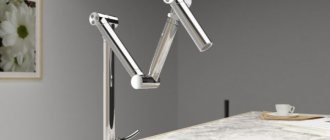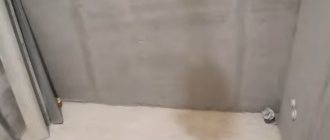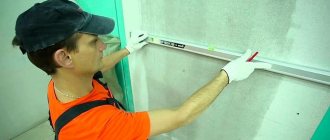To fix tile coverings to walls and floors, a variety of adhesives are used. The range of ready-made solutions is extensive. Almost every manufacturer promises reliable, high-quality gluing. But any specialist will say: the choice of a suitable mixture is influenced by factors such as the type of tile, its size, characteristics of the base, conditions of use, etc.
What should you consider when choosing?
Key points to pay attention to:
- The weight and some features of the material, as well as its size. For example, almost any option is suitable for fixing ceramics - it is lightweight and securely attached to the base, even with a mixture with a low adhesion rate. For large tiles, stone, marble, granite, you will have to choose an adhesive with increased strength.
- Features of the base, as well as the presence of cracks and irregularities on the surface. Wood and drywall require additional processing so that it sticks even with elastic glue.
- Features of the room, humidity and temperature variability.
Base
Which bathroom tile adhesive to choose depends on the base. The wall can be made of plasterboard, concrete, brick, less often - wood, sand-cement screed, metal, glass, plastic. Manufacturers usually write on the packaging which materials it adheres to best, and which ones it will hold the tiles on very weakly.
Particular attention should be paid to the possibility of deformation of the base and the impact of various types of vibrations on them.
For example, wood begins to swell due to high humidity if it is not subjected to special treatment. In this case, you will have to choose an adhesive that will take into account this feature of the wooden base and will securely hold it in place.
Ceramics
The material is quite light, so choosing glue is not much of a problem. The advantages of ceramics are affordable cost and high levels of moisture resistance and temperature resistance.
Porcelain tiles are considered an improved version of ceramic tiles.
Room
For the bathroom or kitchen, it is recommended to select mixtures that repel water and do not absorb it.
To protect the tile surface after using the adhesive, you can apply a moisture-repellent coating on top, since fumes penetrate through the seams and can cause the adhesive to disintegrate.
Surface
Most often, the walls are made of gypsum board, concrete, or the base is brick. Less commonly, the base is wooden, metal, glass, plastic or made of cement-sand screed.
In order for the tile to adhere firmly to the base, it is necessary to take into account the type of surface. The manufacturer writes on the packaging what substrates the glue holds well with.
If the base can increase or decrease in size, for example, wood, then the glue must be chosen elastic so that when deformed, the layer of dried mortar does not crack and the tile does not fall off. It is advisable to treat the wood in the bathroom with a special compound that will prevent the material from absorbing moisture and swelling.
The base on which the tiles are laid must be:
- dry;
- smooth without flaws;
- prepared, with a good level of grip;
- clean.
Concrete
Concrete must be cured for three months or more. If the concrete is not completely dry, the material will stretch when drying. The laid tile material will crack when stretched.
The concrete surface must be primed to increase adhesion and fill pores. It is better to use a deep penetration primer.
It is better to additionally fill a concrete floor with screed to get a perfectly flat base and additional insulation. Dry cement mixtures are the priority.
Tile
If it holds well and does not fall off on its own or when tapped, then you can glue a new tile on top of the old one.
You can check the strength of the old tiles by tapping them with a mallet. Knock on the tile and listen to the sound it makes. If it is deaf, then the fastening is unreliable. Then it is better to remove the tiles and fill the resulting voids with a leveling mixture.
Before installation, the old finish must be thoroughly cleaned of dirt, degreased and washed with plain water.
Drywall
Drywall sheets are characterized by increased moisture absorption. Therefore, if you apply an adhesive solution to untreated drywall, moisture from the glue will be absorbed, which will lead to accelerated drying of the glue and poor adhesion. To reduce absorbency, gypsum board is primed.
Manufacturers of gypsum tiles claim that gypsum tile material is primed at the manufacturing stage. Despite this, it is still better to do additional soil treatment.
Plaster finish may warp. Therefore, you need to choose an adhesive that will hold the tile well during deformation. Good compositions would be epoxy-based, dispersion or thin-layer cement-based with index S.
Painted wall
Surfaces painted with oil- or water-based compounds are not suitable for installation. It is necessary to remove the old finish using one of the known methods. For example, peel off the paint with a spatula, or use sanding. If the paint holds quite firmly, then chemical agents can be used.
How to calculate consumption?
It is important to correctly calculate how much glue is needed for repairs. Usually the approximate glue consumption is indicated on the packaging, but you can make the calculations yourself.
How to calculate consumption:
- Determine the area of the surface to be coated. It is calculated by the formula: multiply the width of the room by its length. If the room is of a non-standard shape, you will have to mentally divide it into geometric shapes and add up the areas of each of them.
- Calculate the quantity required for repairs. Divide the area of the kitchen or bathroom by the area of one tile.
- The skill of the specialist must be taken into account. An inexperienced glue master will spend much more glue, since there is a risk of spoiling the composition or using it in excess.
- Much less glue is used on a flat surface - some of it will not accumulate in cracks and irregularities, trying to close them and provide better adhesion to the material.
The consumption will be higher for an inexperienced craftsman who does not know what layer thickness will be enough and may re-lay some slabs. Laying technology also affects the amount of glue.
The approximate consumption of adhesive for tiling is indicated in the table below.
| Size | Adhesive layer thickness | Approximate quantity (kg/m2) |
| 10x10 | 5 mm | 3 |
| 20x20 | 8 mm | 4 |
| 30x30 | 10 mm | 5 |
Types of tile adhesive
There are a large number of adhesive mixtures on the market from different manufacturers. It can be difficult for inexperienced craftsmen to choose an adhesive suitable for a certain type of repair work.
It must be safe for human health, not emit harmful substances and not have a sharp, unpleasant odor. It is better to avoid compositions that take a very long time to dry.
What determines the choice of adhesive for wall and floor cladding:
- Location of the masonry.
- Level of variability of temperature conditions.
- The force of mechanical impact on the tiles (it is greater on the floor, since furniture and other interior items will be placed on it).
- Features of the base (material mobility, presence of heating).
Cement mixtures
When facing walls in rooms with high humidity, cement mixtures are mainly used. Before use, dilute them with water and stir with a construction mixer. In addition to the cement itself, the composition includes additional elements that increase the elasticity and strength of the adhesive solution.
Features of using cement mixtures:
- The glue dries within half an hour. Therefore, dilute it in small portions and move on to the next batch only after finishing the previous one.
- Affordable price and ease of breeding, the ability to buy at any hardware store.
- Universal, suitable for any type of repair work. Consists of hypoallergenic and safe elements.
- Use does not require special skills or craftsmanship.
Dispersion mixtures
Quite expensive compositions, which are still inferior in cost to glue for professional wall and floor cladding.
The main advantage is the flexible elasticity of the composition, which allows it to be laid even on a moving base that is prone to deformation.
First of all, this applies to wood, which swells with high humidity or dries out in the absence of it, as well as plastic, which quickly cracks under the influence of certain factors.
The characteristics of the adhesive allow it to be laid without first using a primer. However, it is better to cover the surface with putty to get rid of cracks.
Elastic mixtures
Latex is added to the mixture, which increases the elastic properties of the glue. It is actively used when laying tiles on heated floors; it is resistant to high temperatures and high humidity. Suitable for wall cladding with natural stone and porcelain stoneware.
Suitable for cladding a “floating” base - for example, wood, which can swell or, conversely, dry out under the influence of moisture or lack thereof. Can be used to repair showers and swimming pools.
Epoxy mixtures
They are rarely used for cladding work. Epoxy glue is very expensive, so it is not as in demand in the market as its main competitors.
Its advantages are increased strength, excellent resistance to moisture, temperatures and mechanical stress.
Typically, epoxy mixtures are used for cladding elevators, recording studios, stairs, and subways. Withstands vibration levels.
Composition of Knauf Fliesen
The strength indicators of the adhesive composition are quite high. The main advantage of adhesive for laying tiles in the bathroom is its cost-effectiveness. It is able to hold the tiles perfectly and does not slip, so laying tiles in the bathroom can be done from top to bottom.
In the production of the product, dry powder is used, which contains cement, special polymer additives and filler. Material laid in a thin layer is consumed in the amount of 2.4-2.9 kg per 1 m² of surface area.
Knauf Fliesen has the following advantages:
- resistance to temperature changes;
- ability to withstand the effects of moisture.
The material allows for finishing inside and outside the house. The composition can be applied directly to a surface having a large area. You can use it to glue bathroom tiles to the floor and walls. You can buy Knauf Flizen glue for 276 rubles.
Application rules
Tiling walls and floors is not as complicated a process as it seems at first glance. It is not always possible to call a professional technician to your home, since specialist services are not cheap. Therefore, this type of repair work can be performed independently.
You can facilitate the cladding process and increase service life by following the rules:
- Dilute strictly according to the instructions indicated on the package. It is prohibited to change the norms and dosage.
- It is worth starting wall cladding from the floor and gradually moving towards the ceiling.
- Pay special attention to the first row. You can determine its position using a building level. Lay out the remaining rows strictly according to the first.
- It is better to apply it in different directions to improve the adhesion of the material to the base.
- It is applied not only to the tiles, but also to the base itself. Let it dry for a few minutes and only then proceed to styling.
- To ensure equal distance between the tiles, insert small crosses at the future joints.
Breeding technology
In the specified proportions, which are on the package, you need to stir the dry mixture in water.
- Pour the required volume of water into a clean bucket.
- The required amount of mixture is poured into a clean container.
- The water in the bucket begins to be mixed with a mixer or drill. Slowly, stirring constantly, pour the mixture into the funnel formed in the water.
- When the entire mixture is poured in, kneading continues until the solution becomes thick with a uniform consistency without lumps.
- Time is given, for example 5 minutes, for the solution to infuse.
- Mixing is done again, the mixture is ready for application.
Glue options for bathroom walls
The most important question when renovating is which tile adhesive is best to use in the bathroom. Glue that does not securely fix the tiles can lead to the material slipping during tiling work.
Carefully read everything that the manufacturer indicates on the packaging and pay attention to details.
Such mixtures are approximately similar to each other, however, each of them is used for finishing work of a certain type. For example, an adhesive with a high adhesion rate is better suited for fixing heavy materials; for ordinary ceramics, you can choose a simpler mixture.
Knauf fliesen
The level of adhesion is high, thanks to which it firmly fixes not only ceramic tiles, but also natural stone. Sold in construction stores, the cost is much lower than that of professional compounds.
Don’t forget to also look at Knauf Fliesen tile adhesive: application features
It repels moisture and is resistant to thermal influences, so in the area of the stove and sink, the tiles will not crumble due to the glue drying out.
It is recommended to additionally treat the surface with moisture-resistant grout, since steam (for example, from a boiling kettle) can penetrate through the seams.
Unis 2000
It dries quickly and is highly durable, one of the leaders among the options on the market. Provides reliable fixation and protects it from slipping during repair work. Allows you to lay it from bottom to top, and not just in the standard way.
A high drying speed can cause a lot of problems for inexperienced craftsmen, since there will be no opportunity to change the position of crooked tiles. It is worth diluting the glue in small portions so that it does not lose its basic properties.
More detailed information in the article - Unis glue (Unis): types, characteristics, application
Found mastplix t 12
Does not require additional leveling of the base, fills cracks and uneven areas. The main advantage is the level of elasticity, thanks to which it can be used even on a moving base.
Ceresit cm 11
Suitable for indoor renovations. Used for laying ceramic tiles, porcelain stoneware, small mosaics. An absolutely safe composition, it has no unpleasant odor and is harmless to the human body and pets.
We also recommend watching - Ceresit tile adhesive: varieties and features
Ivsil mosaik
Typically used by professional craftsmen, it costs more than other options presented by the same manufacturer. It has a characteristic white tint, which makes it invisible on tiles of the corresponding shade. Lays down in an even layer, seals cracks and irregularities.
It repels moisture well and is resistant to temperature changes and mechanical stress. Suitable for any type of interior cladding work. Durable and reliable composition, allows it to be laid from bottom to top.
Litoflex k80
Suitable materials are porcelain stoneware, natural stone, ceramic tiles. Safe for human health, does not have an unpleasant odor. Laying on the following types of bases is possible: concrete, metal, brick, wood, cement. Adhesion level is high.
It repels moisture well and is resistant to high temperatures.
Bergauf mosaik
Used for laying small mosaics and glass tiles. Firmly fixes natural stone, porcelain stoneware, marble.
A distinctive feature is the white tint of the composition, which allows you to disguise glue residues on a light-colored surface.
High levels of adhesion and moisture resistance.
Cladding work is possible without preliminary leveling of the surface. Easy to use, suitable for inexperienced craftsmen.
Mira 3130 superfix
The best option for the kitchen or bathroom, the degree of resistance to moisture is one of the highest among the mixtures of this manufacturer. Suitable for laying “capricious” materials such as mosaics and natural stone, decorative elements.
Protects it from swelling, fills cracks and irregularities. Does not require preliminary leveling of the surface. Can be used for external cladding and facade finishing.
Sopro 450
It is sold in the form of a dry mixture; before use, it must be diluted with water or a special solution (to increase the strength of the composition). To ensure the mixture is homogeneous, it is recommended to stir using a construction mixer.
Main characteristics – adhesion, moisture resistance, temperature resistance – high.
Reliably fixes ceramic tiles, stone, mosaic.
Keraflex maxi
Does not require surface leveling, fills cracks and has a high level of elasticity. Suitable for covering walls with large tiles, as well as marble, natural and artificial stone. Laying from bottom to top is possible.
Moment silicone sealant
It is suitable for interior and exterior building cladding.
The main advantage is the presence of antiseptic substances in the composition, which prevent contamination of the base (especially for wooden surfaces) by fungus and other bacteria.
Before use, level the surface with putty so that the glue lays evenly.
Adhesive options for bathroom floors
An adhesive intended for lining a bathroom floor must not only repel moisture well, but also be resistant to high temperatures. Fumes can cause the glue to disintegrate, and bathroom floors are often provided with additional heating. Under its influence, the glue should not lose its basic properties or swell.
Otherwise, repeated repairs will have to begin very soon.
Eunice plus
Most often used by both professional craftsmen and beginners. Easy to apply, making application seem very simple.
It is characterized by heat resistance, resistance to frost and moisture. Available on the market in several formats, it can be used for lining showers and swimming pools.
flex
A composition with a high degree of elasticity, suitable for tiling non-standard substrates, as well as those containing rubber-based compounds.
Does not require preliminary leveling of the surface, fills cracks and irregularities.
Sold in any hardware store, the product is not in short supply.
10 strength
This mixture is intended for cladding concrete, metal and brick bases. The high level of adhesion allows you to reliably hold even heavy materials and large tiles.
For better adhesion of the glue to the base, leveling the surface with putty and treatment with a primer is required.
It is not sold as a dry mixture, but in a ready-made version. Before use, you need to pour a small amount of glue into a bucket or bowl and mix well with a construction mixer so that the composition becomes homogeneous.
Siltek t 80
Adhesive for standard facing works. Resistant to moisture, frost, high temperatures. Can be used both indoors and outdoors.
To increase strength indicators, it is recommended to dilute the composition not with ordinary water, but with a special composition (can be purchased at a hardware store).
Choosing a quality adhesive is the first step before starting a repair. The appearance of the tile covering and its integrity and service life depend on the glue. All manufacturers indicate on the packaging the main characteristics of the composition.
Before choosing it, you must clearly know what type of cladding work the adhesive will be used for, and also evaluate the characteristics of the room and the material.
Marking features
There are letter designations on the glue packaging - this is its characteristic.
In accordance with the European standard, the following markings are accepted:
- C - cement glue.
- R - based on reactive resins.
- F - fast hardening. Reduces work completion time.
- T - thixotropic. Used for vertical surfaces.
- E - open time increased. Suitable for beginners, because when working with it there is time to adjust the tiles.
In a cement mixture, numbers 1 and 2 indicate the strength to withstand the load towards the base. For C1, adhesion is at least 0.5 MPa, for C2 - at least 1.0 MPa.
S1 and S2 characterize the elasticity of the glue after drying. S1 is capable of bending under load by no less than 2.5 mm, and S2 by 5.0 mm.
You can improve the C1 cement mixture by adding latex - this will increase the elasticity of the glue. Nothing should be added to a mixture where S1 or S2 is indicated in the composition, as the quality may deteriorate.
